Submitted:
18 September 2024
Posted:
19 September 2024
You are already at the latest version
Abstract

Keywords:
1. Introduction
- (I)
- Characterization of the summertime LST footprints of the piles compared to other common UGSs in the Ruhr Metropolitan Region.
- (II)
- Understanding mean summertime LST values of the piles in the context of vegetation and terrain attributes using the k-mean classification procedure.
- (III)
- Understanding pixel-based summertime LST values of the piles in the context of vegetation, soil and terrain attributes using random forest regression modeling.
2. Materials and Methods
2.1. Study Area
2.2. Data Acquisition
2.2.1. Land Surface Temperature (LST)
2.2.2. Vegetation Characteristics (NDVI, NDMI, Height)
2.2.3. Soil Characteristics (NDBaI, TVDI)
2.2.4. Terrain Attributes (Altitude, Slope, Aspect, Curvature)
2.3. Statistical Analysis
2.3.1. Cluster Analyses
2.3.2. Random Forest Regression (RFR)
2.3.3. Feature Importance Analysis
2.3.4. Model Validation
3. Results
3.1. Tailing Pile Characteristics
3.1.1. Spatial Distribution across the Ruhr Area
3.1.2. Morphological Attributes
3.1.3. Thermal Footprints
3.2. Thermal Typification of Tailing Piles
3.3. Controlling Factors of the LST Distribution of the Tailing Piles
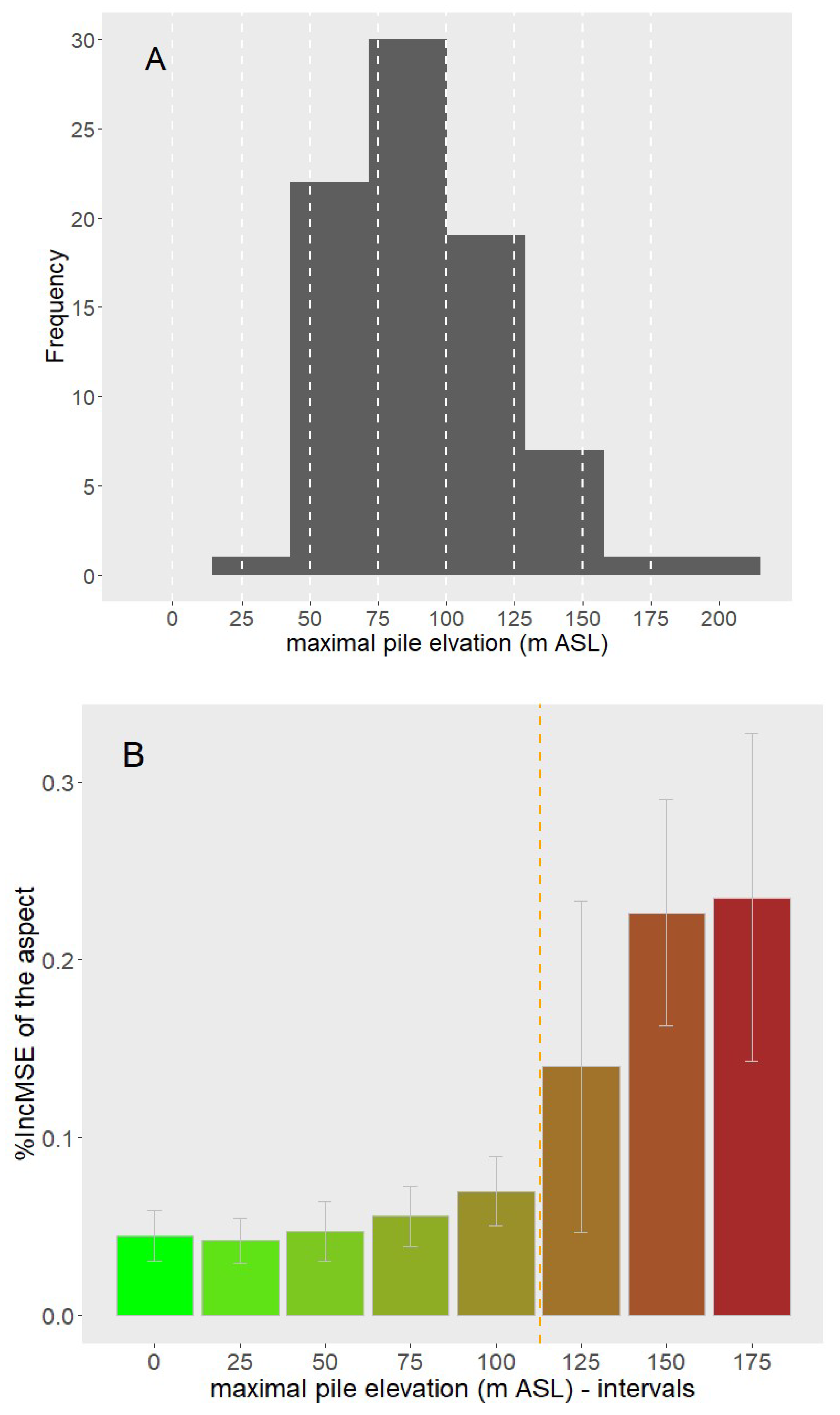
3.4. Impact of Soil Moisture on the Pile LST Pattern
4. Discussion
4.1. The Role of Tailing Piles as Cooling Urban Greens
4.2. Factors Controlling LST on Tailing Piles
4.3. Implications for Urban Planning
4.4. Limitations and Open Questions
Author Contributions
Funding
Data Availability Statement
Acknowledgments
Conflicts of Interest
Appendix A
 |
 |
References
- Yang, L. , Qian, F., Song, D.-X., Zheng, K.J. Research on urban heat-island effect. Procedia Engineering 2016, 169, 11–18. [Google Scholar] [CrossRef]
- Deilami, K.; Kamruzzaman, M.; Liu, Y. Urban heat island effect: A systematic review of spatio-temporal factors, data, methods, and mitigation measures. International Journal of Applied Earth Observation and Geoinformation 2018, 67, 30–42. [Google Scholar] [CrossRef]
- Oke, T.R. The Energetic Basis of the Urban Heat Island. Quarterly Journal of the Royal Meteorological Society 1982, 455, 1–24. [Google Scholar] [CrossRef]
- Aflaki, A. , Mirnezhad, M., Ghaffarianhoseini, A., Ghaffarianhoseini, A., Omrany, H., Wang, Z.-H., Akbari, H. Urban heat island mitigation strategies: A state-of-the-art review on Kuala Lumpur, Singapore and Hong Kong. Cities 2017, 62, 131–145. [Google Scholar] [CrossRef]
- Wang, Y. , Akbari, H. Analysis of urban heat island phenomenon and mitigation solutions evaluation for Montreal. Sustainable Cities and Society 2016, 26, 438–446. [Google Scholar] [CrossRef]
- O`Malley, C.; Piroozfar, P.; Farr, E.R.P.; Pomponi, F. Urban Heat Island (UHI) mitigating strategies: A case-based comparative analysis. Sustainable Cities and Society 2015, 19, 222–235. [Google Scholar] [CrossRef]
- Aram, F.; Higueras García, E.; Solgi, E.; Mansournia, S. Urban green space cooling effect in cities. Heliyon 2019, 5, 1–31. [Google Scholar] [CrossRef]
- Gago, E.J. , Roldan, J., Pacheco-Torres, R., Ordònez, J. The city and urban heat islands: A review of strategies to mitigate adverse effects. Renewable and Sustainable Energy Reviews 2013, 25, 749–758. [Google Scholar] [CrossRef]
- Mackey, C.W. , Lee, X., Smith, R.B. Remotely sensing the cooling effects of city scale efforts to reduce urban heat island. Build. Environ. 2012, 49, 348–358. [Google Scholar] [CrossRef]
- Farhadi, H. , Faizi, M., Sanaieian, H. Mitigating the urban heat island in a residential area in Tehran: Investigating the role of vegetation, materials, and orientation of buildings. Sustainable Cities and Society 2019, 46, 101448. [Google Scholar] [CrossRef]
- Lai, D. , Liu, W., Gan, T., Liu, K., Chen, Q. A review of mitigating strategies to improve the thermal environment and thermal comfort in urban outdoor spaces. Sci. Total Environ. 2019, 661, 337–353. [Google Scholar] [CrossRef] [PubMed]
- Norton, B.A. , Coutts, A.M., Livesley, S.J., Harris, R.J., Hunter, A.M., Williams, N.S.G. Planning for cooler cities: A framework to prioritise green infrastructure to mitigate high temperatures in urban landscapes. Landscape and Urban Planning 2015, 134, 127–138. [Google Scholar] [CrossRef]
- Sun, R. , Chen, L. Effects of green space dynamics on urban heat islands: Mitigation and diversification. Ecosystem Services 2017, 23, 38–46. [Google Scholar] [CrossRef]
- Stumpe, B. , Stuhrmann, N., Jostmeier, A., Marschner, B. Urban cemeteries: The forgotten but powerful cooling islands. The Science of the total environment 2024, 934, 173167. [Google Scholar] [CrossRef] [PubMed]
- Huang, C.; Huang, P.; Wang, X.; Zhuou, Z. Assessment and optimization of green space for urban transformation in resources-based city - A case study of Lengshuijiang city, China. Urban Forestry & Urban Greening 2018, 30, 295–306. [Google Scholar]
- Hamada, S.; Ohta, T. Seasonal variations in the cooling effect of urban green areason surrounding urban areas. Urban Forestry & Urban Greening 2010, 9, 15–24. [Google Scholar] [CrossRef]
- Kuang, W. , Liu, Y., Dou, Y., Chi, W., Chen, G., Gao, C., Yang, T., Liu, J., Zhang, R. What are hot and what are not in an urban landscape: quantifying and explaining the land surface temperature pattern in Beijing, China. Landscape Ecology 2015, 30, 357–373. [Google Scholar] [CrossRef]
- Algretawee, H. The effect of graduated urban park size on park cooling island and distance relative to land surface temperature (LST). Urban CLim. 2022, 45, 101255. [Google Scholar] [CrossRef]
- Park, S. , Im, J., Park, S., Rhee, J. Drought monitoring using high resolution soil moisture through multi-sensor satellite data fusion over the Korean peninsula. Agricultural and Forest Meteorology 2017, 237, 257–269. [Google Scholar] [CrossRef]
- Cao, X.; Onishi, A.; Chen, J.; Imura, H. Quantifying the cool island intensity of urban parks using ASTER and IKONOS data. Landscape and Urban Planning 2010, 96, 224–231. [Google Scholar] [CrossRef]
- Masoudi, M. , Tan, P.Y., Fadaei, M. The effects of land use on spatial pattern of urban green spaces and their cooling ability. Urban CLim. 2021, 35, 100743. [Google Scholar] [CrossRef]
- Kong, F.; Yin, H.; Wang, C.; Cavan, G.; James, P. A satellite image-based analysis of factors contributing to the green-space cool island intensity on a city scale. Urban Forestry & Urban Greening 2014, 13, 846–853. [Google Scholar] [CrossRef]
- Li, Y. , Ren, C., Ying-en Ho, J., Shi, Y. Landscape metrics in assessing how the configuration of urban green spaces affects their cooling effect: A systematic review of empirical studies. Landscape and Urban Planning 2023, 239, 104842. [Google Scholar] [CrossRef]
- Terfa, B.K. , Chen, N., Zhang, X., Niyogi, D. Spatial Configuration and Extent Explains the Urban Heat Mitigation Potential due to Green Spaces: Analysis over Addis Ababa, Ethiopia. remote sensing 2020, 12, 2876. [Google Scholar] [CrossRef]
- Yao, L. , Li, T., Xu, M., Xu, Y. How the landscape features of urban green space impact seasonal land surface temperatures at a city-block-scale: An urban heat island study in Beijing, China. Urban Forestry & Urban Greening 2020, 52, 126704. [Google Scholar] [CrossRef]
- Hou, H. , Estoque, R.C. Detecting Cooling Effect of Landscape from Composition and Configuration: An Urban Heat Island Study on Hangzhou. Urban Forestry & Urban Greening 2020, 53, 126719. [Google Scholar] [CrossRef]
- Amani-Beni, M.; Zhang, B.; Xie, G.D.; Xu, J. Impact of urban park's tree, grass and waterbody on microclimate in hot summer days: A case study of Olympic Park in Beijing, China. Urban Forestry & Urban Greening 2018, 32, 1–6. [Google Scholar] [CrossRef]
- Wang, X.; Dallimer, M.; Scott, C.E.; Shi, W.; Gao, J. Tree species richness and diversity predicts the magnitude of urban heat island mitigation effects of greenspaces. The Science of the total environment 2021, 770, 1–42. [Google Scholar] [CrossRef]
- Rahman, M.A. , Armson, D., Ennos, A.R. A comparison of the growth and cooling effectiveness of five commonly planted urban tree species. Urban Ecosystems 2015, 18, 371–389. [Google Scholar] [CrossRef]
- Helletsgruber, C. , Gillner, S., Gulyas, A., Junker, R.R., Tanacs, E., Hof, A. Identifying Tree Traits for Cooling Urban Heat Islands—A Cross-City Empirical Analysis. Forests 2020, 11, 1064. [Google Scholar] [CrossRef]
- Kong, F. , Yan, W., Zheng, G., Yin, H., Cavan, G., Zhan, W., Zhang, N., Cheng, L. Retrieval of three-dimensional tree canopy and shade using terrestrial laser scanning (TLS) data to analyze the cooling effect of vegetation. Agricultural and Forest Meteorology 2017, 217, 22–34. [Google Scholar] [CrossRef]
- Wang, X. , Rahman, M.A., Mokros, M., Rötzer, T., Pattnaik, N., Pang, Y., Zhang, Y., Da, L., Song, K. The influence of vertical canopy structure on the cooling and humidifying urban microclimate during hot summer days. Landscape and Urban Planning 2023, 238, 104841. [Google Scholar] [CrossRef]
- Stumpe, B.; Bechtel, B.; Heil, J.; Jörges, C.; Jostmeier, A.; Kalks, F.; Schwarz, K.; Marschner, B. Soil texture mediates the surface cooling effect of urban and peri-urban green spaces during a drought period in the city area of Hamburg (Germany). Sci. Total Environ. 2023, 897, 165228. [Google Scholar] [CrossRef] [PubMed]
- Tan, J.; Yu, D.; Li, Q.; Tan, X.; Zhou, W. Spatial relationship between land-use/land-cover change and land surface temperature in the Dongting Lake area, China. Scientific reports 2020, 10, 1–9. [Google Scholar] [CrossRef]
- Le, M.S. , Liou, Y.-A. Spatio-Temporal Assessment of Surface Moisture and Evapotranspiration Variability Using Remote Sensing Techniques. Remote Sensing 2021, 13, 1667. [Google Scholar] [CrossRef]
- Sandholt, I. , Rasmussen, K., Andersen, J. A simple interpretation of the surface temperature/vegetation index space for assessment of surface moisture status. Remote Sensing of Environment 2002, 79, 213–224. [Google Scholar] [CrossRef]
- Chen, J. , Wang, C., Jiang, H., Mao, L., Zhenrong, Y. Estimating soil moisture using Temperature–Vegetation Dryness Index (TVDI) in the Huang huai-hai (HHH) plain. International Journal of Remote Sensing 2011, 32, 1165–1177. [Google Scholar] [CrossRef]
- Yuan, L., Li, L., Zhang, T., Chen, L., Zhao, J., Hu, S., Cheng, L., Liu, W. Soil Moisture Estimation for the Chinese Loess Plateau Using MODIS-derived ATI and TVDI. Remote Sensing 12, 3040. [CrossRef]
- Zhao, H. , Li, Y., Chen, X., Wang, H., Yao, N., Liu, F. Monitoring monthly soil moisture conditions in China with temperature vegetation dryness indexes based on an enhanced vegetation index and normalized difference vegetation index. Theoretical and Applied Climatology 2021, 143, 159–176. [Google Scholar] [CrossRef]
- Karbalaee, A.R. , Hedjazizadeh, Z., Masoodian, S.A. Dependency of LSA and LST to topographic factors in Iran, based on remote sensing data. Theoretical and Applied Climatology 2023, 153, 709–726. [Google Scholar] [CrossRef]
- Bai, Y. , Wang, K., Ren, Y., Li, M., Ji, R., Wu, X., Yan, X., Lin, T., Zhang, G., Zhou, X., Mei, H., Ye, H. 3D compact form as the key role in the cooling effect of greenspace landscape pattern. Ecological Indicators 2024, 160, 111776. [Google Scholar] [CrossRef]
- Cao, X. , Onishi, A., Chen, J., Imura, H. Quantifying the cool island intensity of urban parks using ASTER and IKONOS data. Landscape and Urban Planning 2010, 96, 224–231. [Google Scholar] [CrossRef]
- Spronken-Smith, R.A. , Oke, T.R. The thermal regime of urban parks in two cities with different summer climates. International Journal of Remote Sensing 1998, 19, 2085–2104. [Google Scholar] [CrossRef]
- Okumus, E.E.; Terzi, F. Ice floes in urban furnance: Cooling services of cemeteries in regulating the thermal environment of Istanbul`s urban landscape. Urban CLim. 2023, 49, 101549. [Google Scholar] [CrossRef]
- Glocke, P. , Scholz, T., Grudzielanek, M.A. Assessing the Cooling Potential of Tailing Piles for Urban Heat Mitigation in Germany’s Ruhr Metropolitan Area—A Case Study of the Rungenberg in Gelsenkrichen. Atmosphere 2023, 14, 1492. [Google Scholar] [CrossRef]
- Goetzke, R., Over, M., Braun, M. A METHOD TO MAP LAND-USE CHANGE AND URBAN GROWTH IN NORTH RHINE-WESTPHALIA (GERMANY). Proceedings of the 2nd Workshop of the EARSeL SIG on Land Use and Land Cover 2006, 102-111.
- Auer, S.; Wenning, T.; Burk, B.; Mathee-Will, G.; Müller, H.C. People. Nature. Space. Green infrastructure in the Ruhr metropolis.; Regionalverband Ruhr: Essen, Germany, 2021; p. 33.
- Schulz, D. Recultivation of mining waste dumps in the Ruhr Area, Germany. In Minesite Recultivation, Reinhard, F.H., Heinkele, T., Wisniewski, J., Ed.; Springer: 1996; pp. 89–98.
- Schulz, D. Recultivation of mining waste dumps in the Ruhr Area, Germany. Water, Air, and Soil Pollution 1996, 91, 89–98. [Google Scholar] [CrossRef]
- Bezirksregierung-Koeln. Digitales Basis-Landschaftsmodell - Paketierung: gesamt NRW. Available online: https://www.opengeodata.nrw.de/produkte/geobasis/lm/akt/basis-dlm/ (accessed on June 2024).
- USGS. EarthExplorer. Available online: https://earthexplorer.usgsgov/ (accessed on.
- Avdan, U.; Jovanovska, G. Algorithm for Automated Mapping of Land Surface Temperature Using LANDSAT 8 Satellite Data. Journal of Sensors 2016, 2016, 1–8. [Google Scholar] [CrossRef]
- Stathopoulou, M.C. Daytime urban heat island from Landsat ETM+ and Corine land cover data: An application to major cities in Greece. Solar Energy 2007, 81, 358–368. [Google Scholar] [CrossRef]
- Huang, S.; Tang, L.; Hupy, J.P.; Wang, Y.; Shao, G. A commentary review on the use of normalized difference vegetation index (NDVI) in the era of popular remote sensing. Journal of Forest Research 2021, 32, 1–6. [Google Scholar] [CrossRef]
- Burnett, M.; Chen, D. Urban Heat Island Footprint Effects in Bio-Productive Rural Land Covers Surrounding a Low Density Urban Center. The International Archives of the Photogrammetry, Remote Sensing and Spatial Information Sciences 2021, Volume XLIII-B3-2021, 539–550.
- Taloor, A.K.; Manhas, D.S.; Kothyari, G.C. Retrieval of land surface temperature, normalized difference moisture index, normalized difference water index of the Ravi basin using Landsat data. Appl. Comput. Geosci. 2021, 9, 11. [Google Scholar] [CrossRef]
- Yu, Z.; Guo, X.; Jørgensen, G.; Vejre, H. How can urban green spaces be planned for climate adaptation in subtropical cities? Ecological Indicators 2017, 82, 152–162. [Google Scholar] [CrossRef]
- Halder, B.; Karimi, A.; Mohammad, P.; Bandyopadhyay, J.; Brown, R.D.; Yaseen, Z.M. Investigating the relationship between land alteration and the urban heat island of Seville city using multi-temporal Landsat data. Theoretical and Applied Climatology 2022, 150, 613–635. [Google Scholar] [CrossRef]
- Hoffmann, T. SunCalc. Available online: https://www.suncalc.org (accessed on.
- Heil, H.; Häring, V.; Marschner, B.; Stumpe, B. Advantages of fuzzy k-means over k-means clustering in the classification of diffuse reflectance soil spectra: A case study with West African soils. Geoderma 2019, 337, 11–21. [Google Scholar] [CrossRef]
- Kodinariya, T.; Makwana, P. Review on determining of cluster in K-means clustering. International Journal of Applied Earth Observation and Geoinformation 2013, 1, 90–95. [Google Scholar]
- MacQueen, J. Some methods for classification and analysis of multivariate observations. Proceedings of the fifth Berkeley symposium on mathematical statistics and probability. 1967, 1(14), 281–297. [Google Scholar]
- R_foundation. The R Project for Statistical Computing. Available online: https://www.r-project.org/ (accessed on March 20, 2024).
- Kassambara, A.; Mundt, F. Factoextra: Extract and Visualize the Results of Multivariate Data Analyses. R Package Version 1.0.7. Available online: https://CRAN.R-project.org/package=factoextra (accessed on March 30, 2024).
- Breimann, L. Random Forest. Machine Learning 2001, 45, 5–32. [Google Scholar] [CrossRef]
- Jörges, C.; Berkenbrink, C.; Stumpe, B. Prediction and reconstruction of ocean wave heights based on bathymetric data using LSTM neural networks. Ocean Engeneering 2021, 232. [Google Scholar] [CrossRef]
- Liaw, A.; Wiener, M. Classification and Regression by Randomforest. R News 2002, 2, 18–22. [Google Scholar]
- Fox, E.W.; Hill, R.A.; Leibowitz, S.; Olsen, A.R.; Thornbrugh, D.J.; Weber, M.H. Assessing the accuracy and stability of variable selection methods for random forest modeling in ecology. Environmental Monitoring Assessment 2017, 189(7), 316. [Google Scholar] [CrossRef]
- Kuhn, S.; Egert, B.; Neumann, S.; Steinbeck, C. Building blocks for automated elucidation of metabolites: Machine learning methods for NMR prediction. BMC Bioinformatics 2008, 9, 1–19. [Google Scholar] [CrossRef] [PubMed]
- Mirchooli, F.; Kiani-Harchegani, M.; Darvishan, A.K.; Falahatkar, S.; Sadeghi, S.H. Spatial distribution dependency of soil organic carbon content to important environmental variables. Ecological Indicators 2020, 116, 106473. [Google Scholar] [CrossRef]
- Hamner, B. Metrics. Available online: https://github.com/mfrasco/Metrics/tree/master/R (accessed on.
- Mathew, A. , Khandelwal, S., Kaul, N. Spatial and temporal variations of urban heat island effect and the effect of percentage impervious surface area and elevation on land surface temperature: Study of Chandigarh city, India. Sustainable Cities and Society 2016, 26, 264–277. [Google Scholar] [CrossRef]
- Macarof, P.; Bartic, G.C.; Groza, S.; Statescu, F. ANALYSIS OF LST-NDVI SPARSE/DENSE VEGETATION RELATIONSHIP: A CASE STUDY OF IASI COUNTY. Sci. Pap.-Ser. E-Land Reclam. Earth Obs. Surv. Environ. Eng. 2018, 7, 168–173. [Google Scholar]
- Yang, C.; He, X.; Wang, R.; Yan, F.; Yu, L.; Bu, K.; Yang, J.; Chang, L.; Zhang, S. The Effect of Urban Green Spaces on the Urban Thermal Environment and Its Seasonal Variations. Forests 2017, 8, 1–19. [Google Scholar] [CrossRef]
- Caynes, R.J.C. , Mitchell, M.G.E., Sabrina, D., Johansen, K., Rhodes, J.R. Using high-resolution LiDAR data to quantify the three-dimensional structure of vegetation in urban green space. Urban Ecosystems 2016, 19, 1749–1765. [Google Scholar] [CrossRef]
- Chen, J.; Jin, S.; Du, P. Roles of horizontal and vertical tree canopy structure in mitigating daytime and nighttime urban heat island effects. International Journal of Applied Earth Observation and Geoinformation 2020, 89, 1–11. [Google Scholar] [CrossRef]
- Gage, E.A. , Cooper, D.J. Urban forest structure and land cover composition effects on land surface temperature in a semi-arid suburban area. Urban Forestry & Urban Greening 2017, 28, 28–35. [Google Scholar] [CrossRef]
- Keating, K.A.; Gogan, P.J.P.; Vore, J.M.; Irby, L.R. A Simple Solar Radiation Index for Wildlife Habitat Studies. Journal of Wildlife Management 2020, 71, 1344–1348. [Google Scholar] [CrossRef]
- Peng, X.; Wu, W.; Zheng, Y.; Sun, J.; Hu, A.; Wang, P. Correlation analysis of land surface temperature and topographic elements in Hangzhou, China. Scientific Reports 2020, 10, 10451. [Google Scholar] [CrossRef] [PubMed]
- Anning, A.K. , Rubino, D.L., Sutherland, E.K., McCarthy, B.C. Dendrochronological analysis of white oak growth patterns across a topographic moisture gradient in southern Ohio. Dendrochronologia 2013, 31, 120–128. [Google Scholar] [CrossRef]
- Mohamedou, C. , Tokola, T., Eerikäinen, K. LiDAR-based TWI and terrain attributes in improving parametric predictor for tree growth in southeast Finland. International Journal of Applied Earth Observation and Geoinformation 2017, 62, 183–191. [Google Scholar] [CrossRef]
- Adams, H.R. , Barnard, H.R., Loomis, A.K. Topography alters tree growth–climate relationships in a semi-arid forested catchment. Ecosphere 2014, 5, 148. [Google Scholar] [CrossRef]
- Tanure, M.M.C. , Costa, L.M., Huiz, H.A., Fernandes, R.B.A., Cecon, P.R., Junior, J.D.P., de Luz, J.M.R. Soil water retention, physiological characteristics, and growth of maize plants in response to biochar application to soil. Soil & Tillage Research 2019, 192, 164–173. [Google Scholar] [CrossRef]
- Atkinson, C.J. How good is the evidence that soil-applied biochar improves water-holding capacity? Soil Use and Management 2018, 34, 177–186. [Google Scholar] [CrossRef]
- Kürten, S.; Feindegen, M.; Noel, Y. Geothermal Utilization of Smoldering Mining Dumps. In Coal and Peat Fires: A Global Perspective, Stracher, G.B., Prakash, A., Sokol, E.V., Eds.; Elsevier: 2015; Volume 4, pp. 241–261.
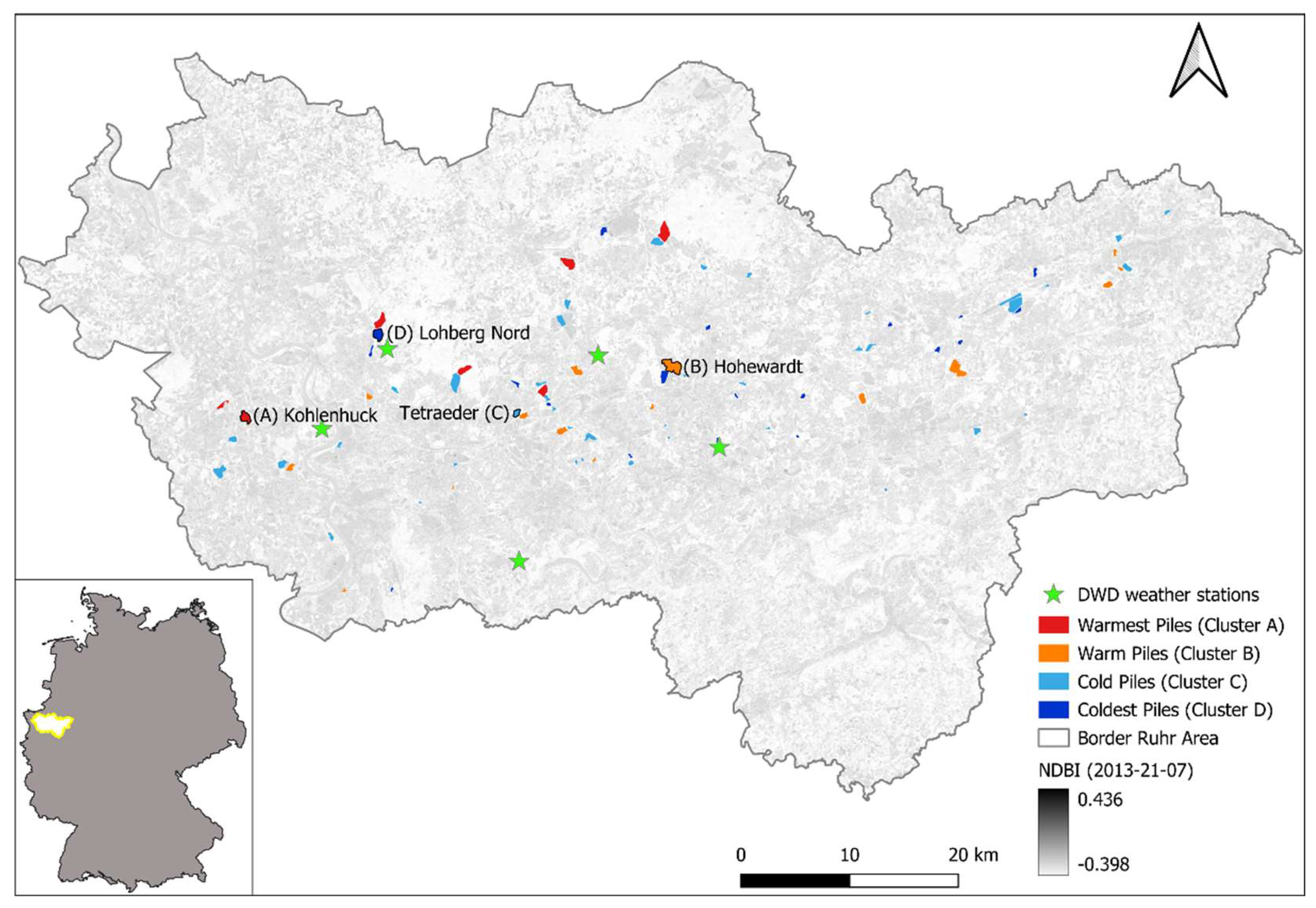
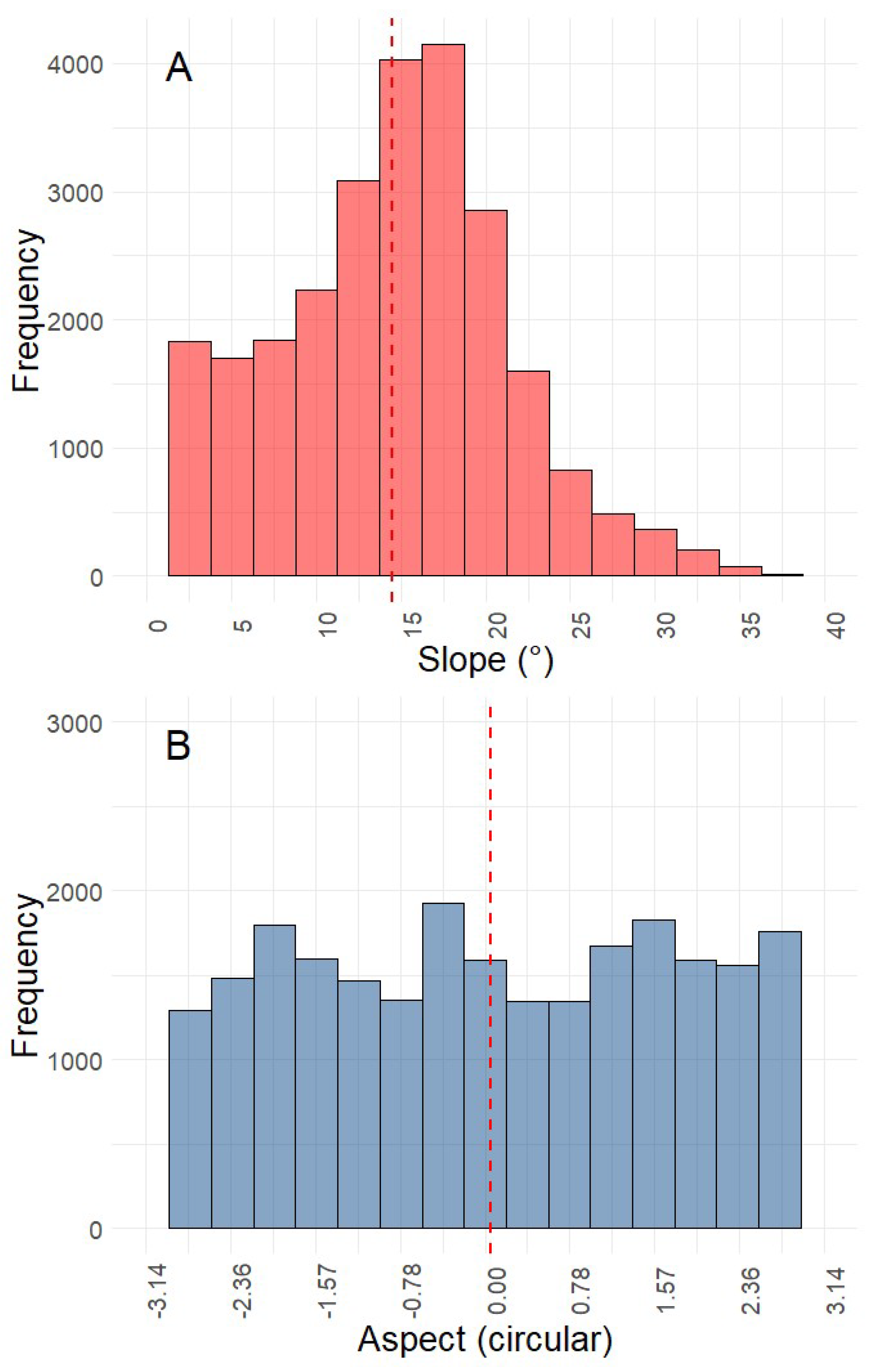
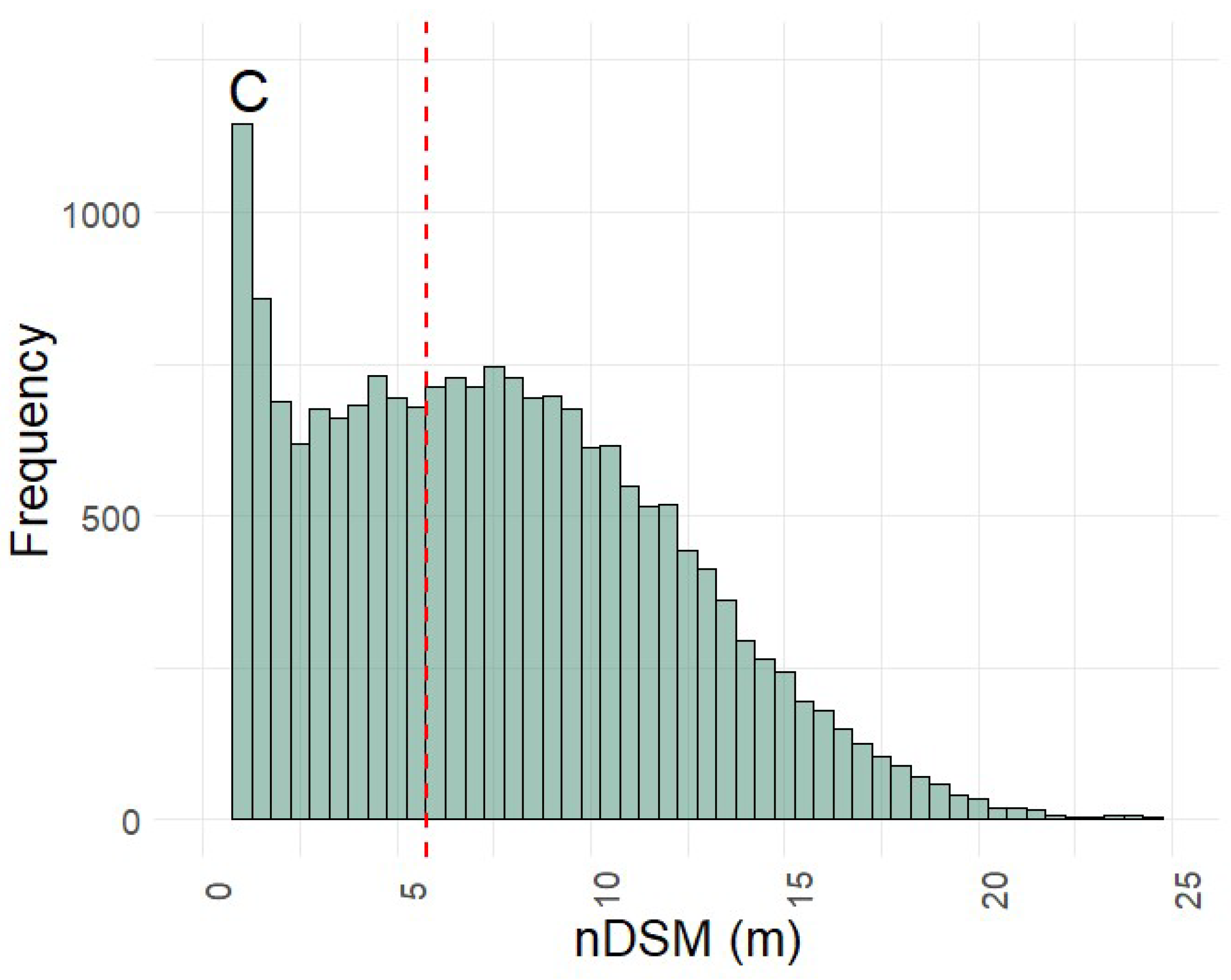
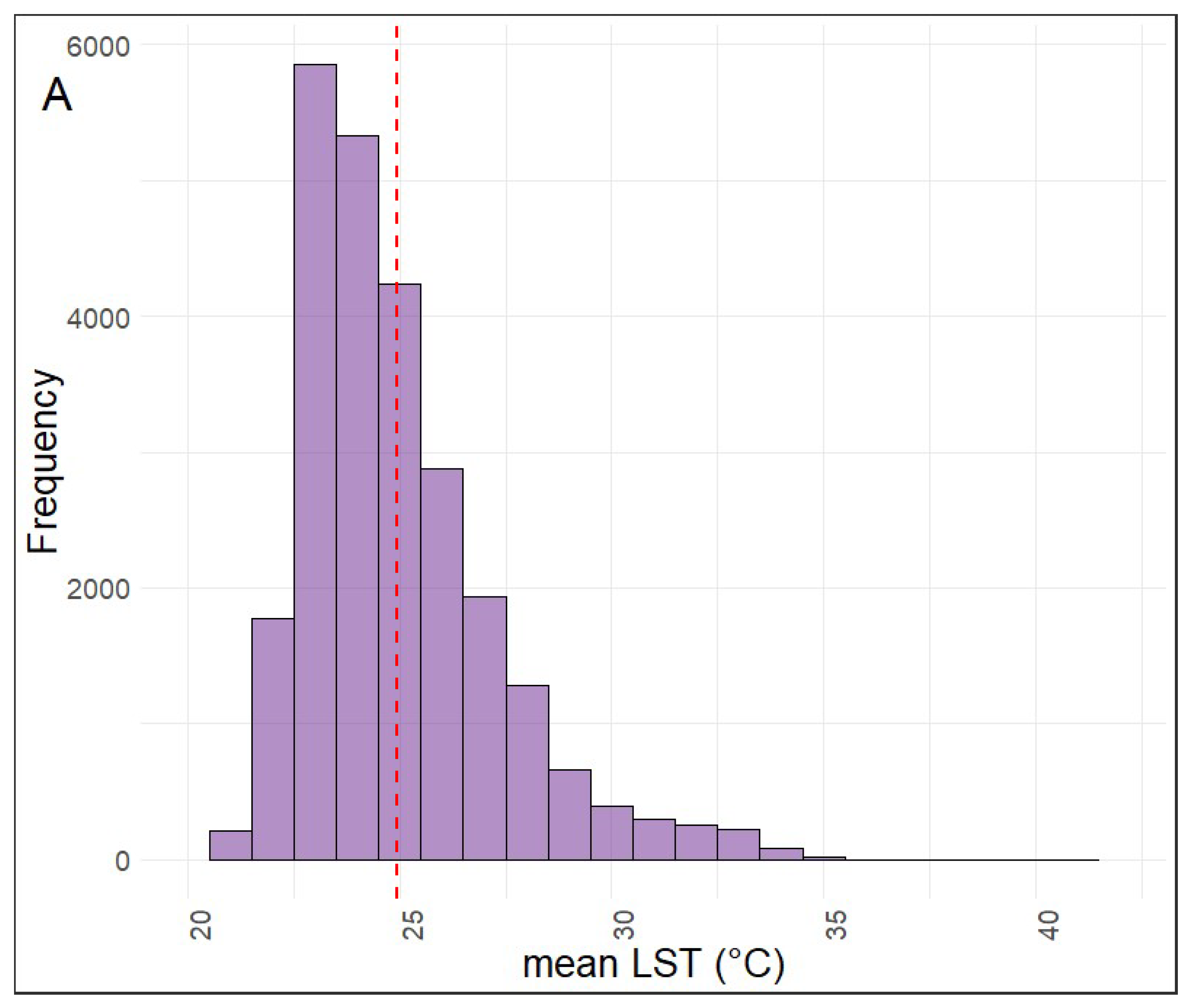
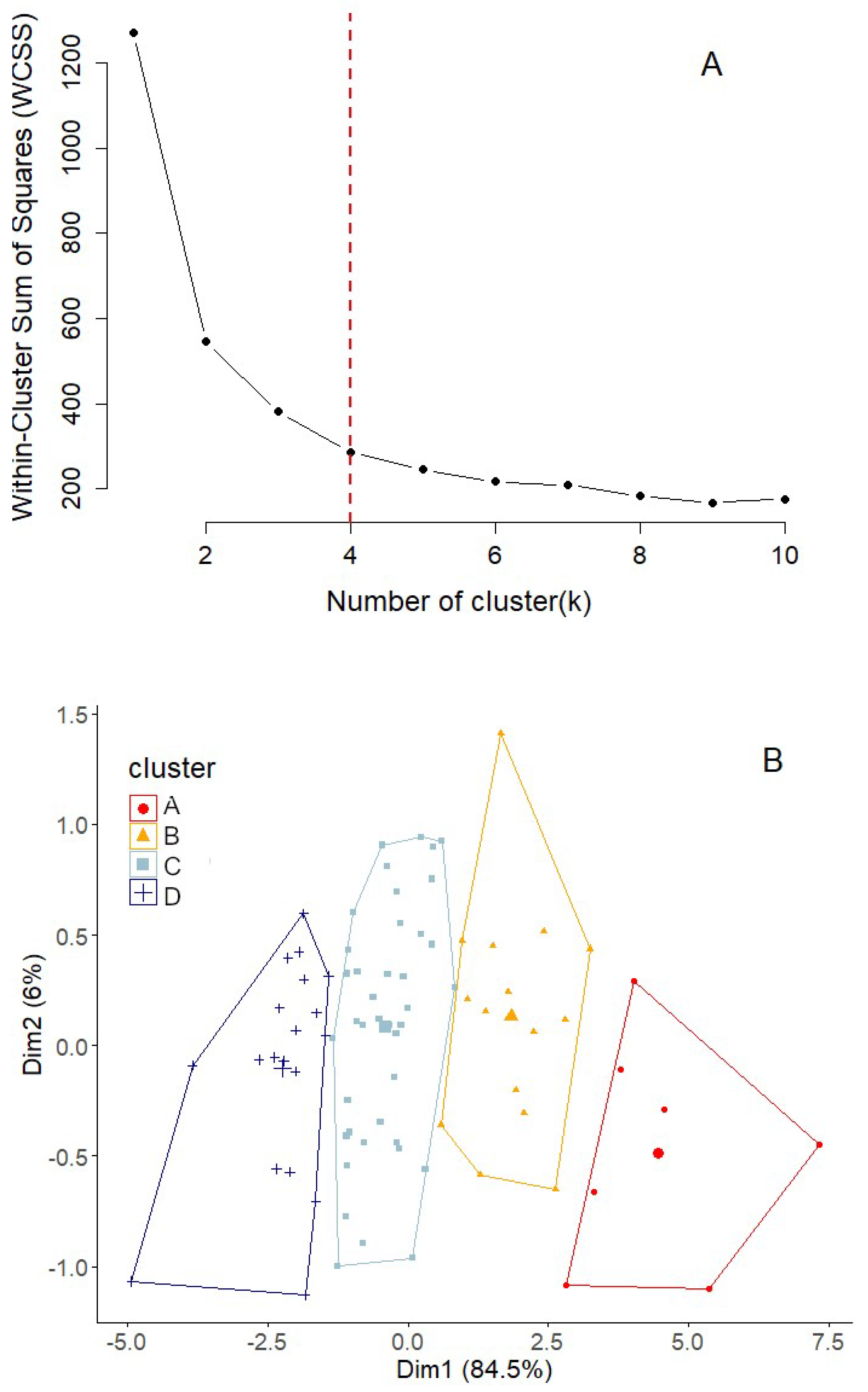
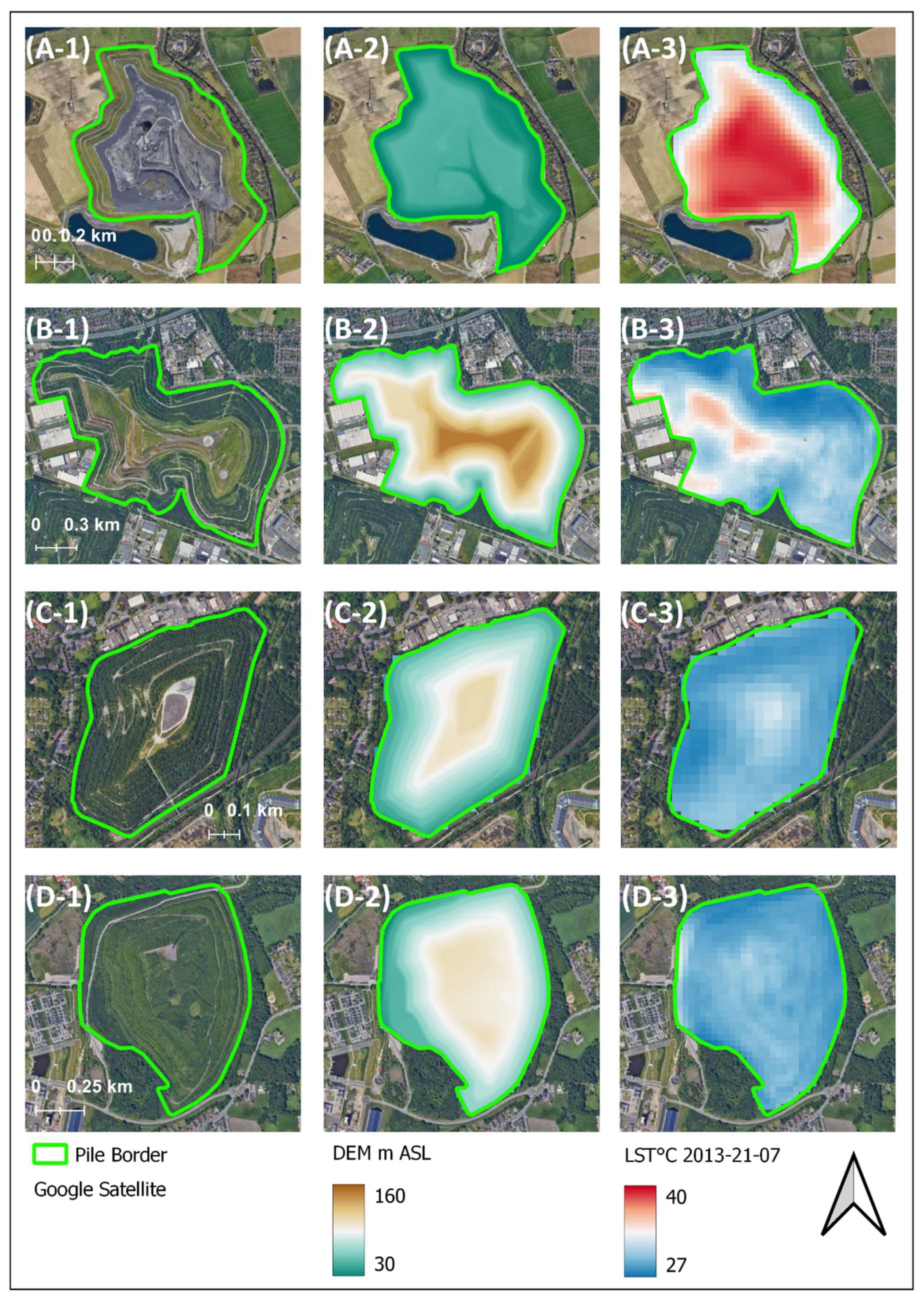
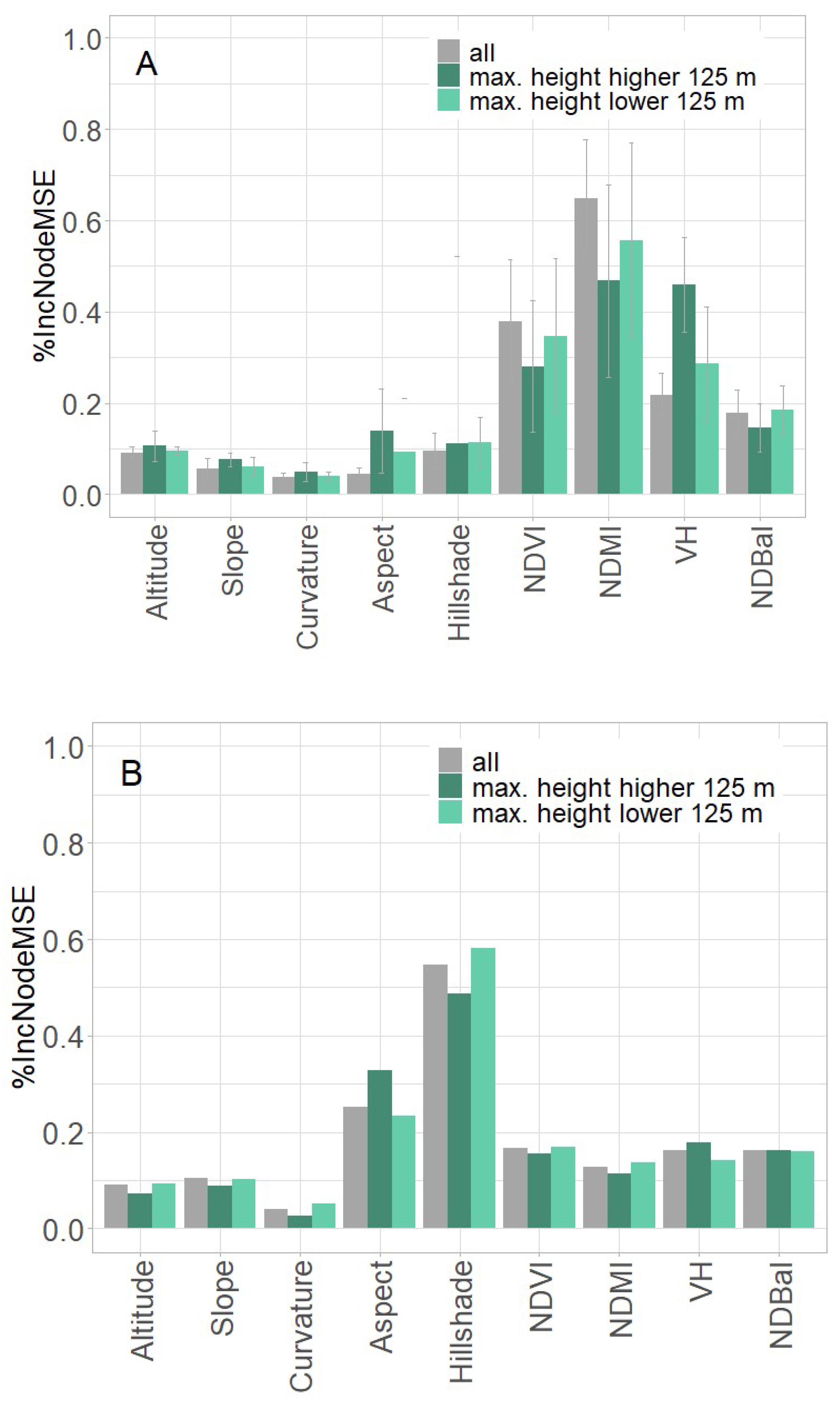
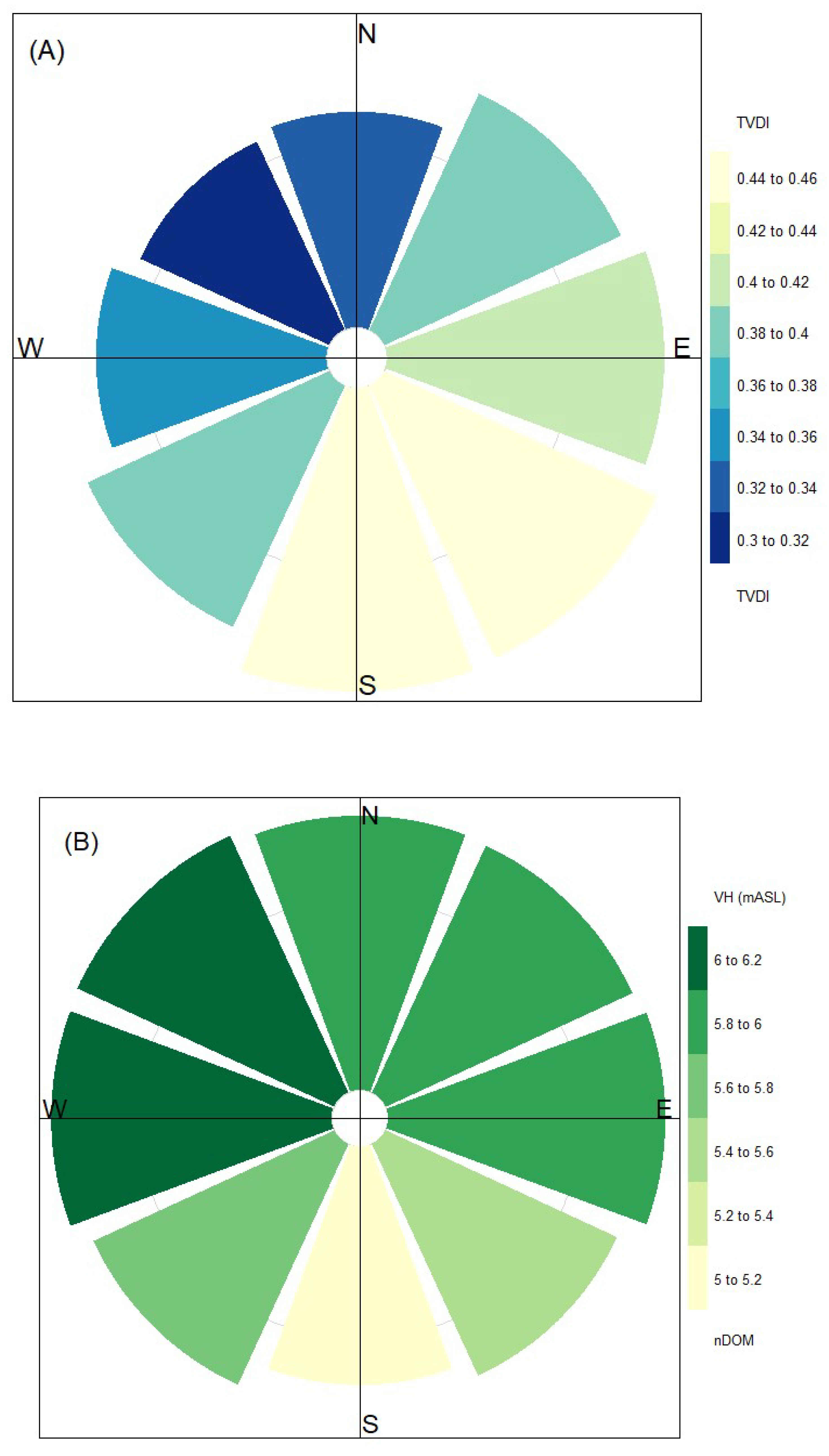
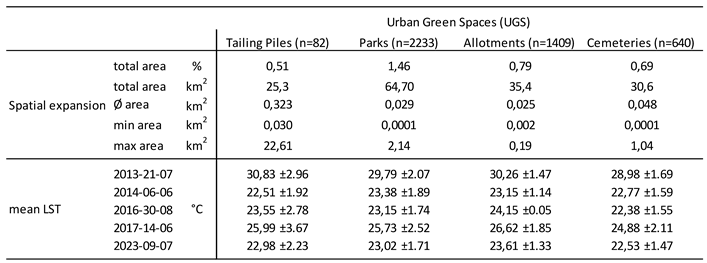 |
 |
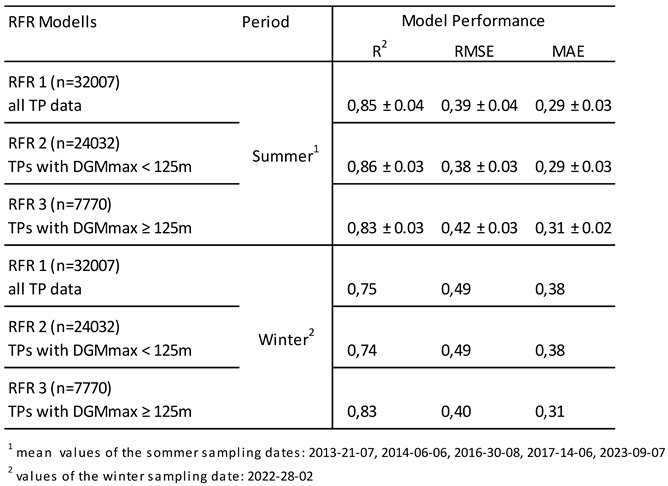 |
Disclaimer/Publisher’s Note: The statements, opinions and data contained in all publications are solely those of the individual author(s) and contributor(s) and not of MDPI and/or the editor(s). MDPI and/or the editor(s) disclaim responsibility for any injury to people or property resulting from any ideas, methods, instructions or products referred to in the content. |
© 2024 by the authors. Licensee MDPI, Basel, Switzerland. This article is an open access article distributed under the terms and conditions of the Creative Commons Attribution (CC BY) license (http://creativecommons.org/licenses/by/4.0/).





